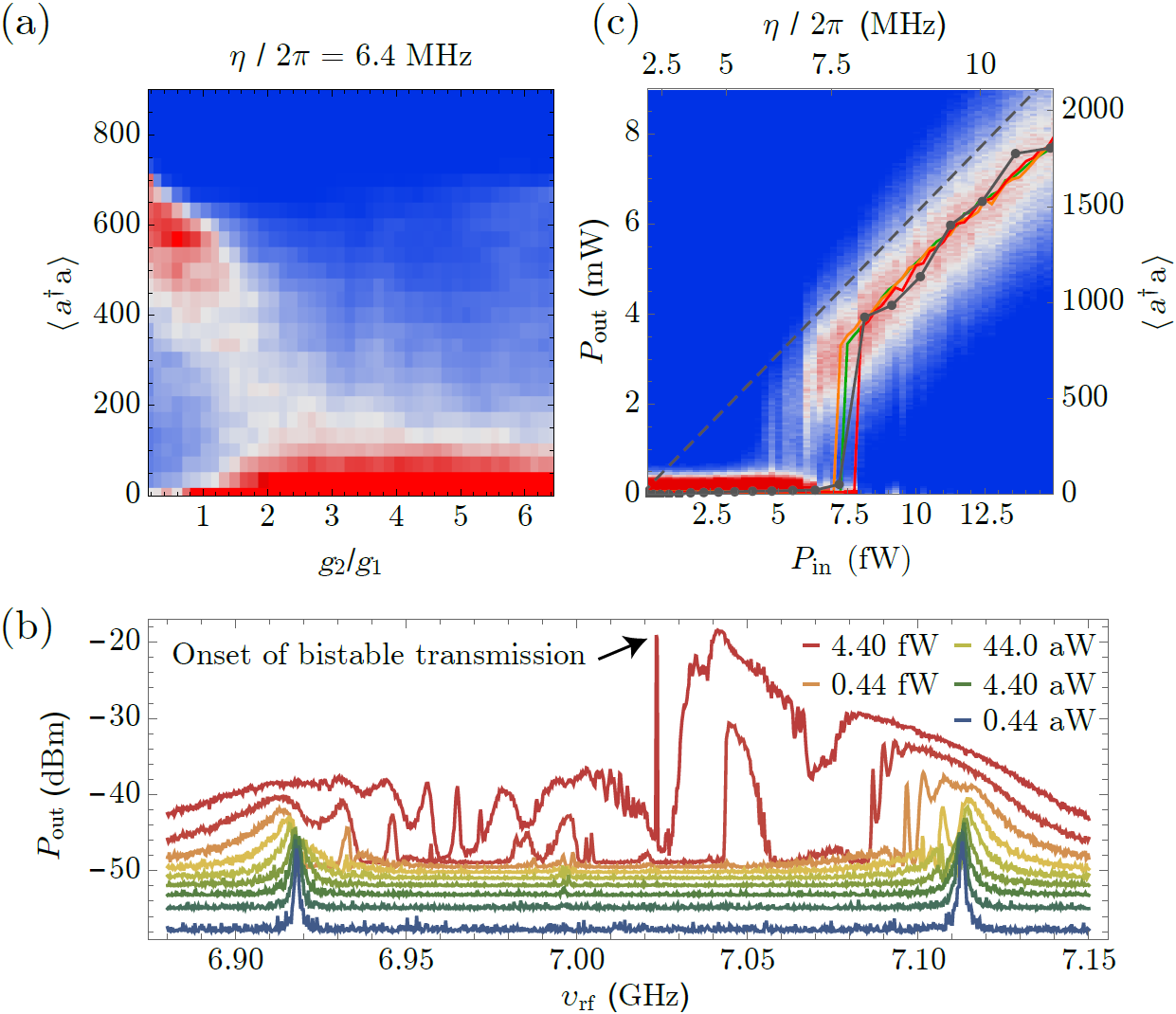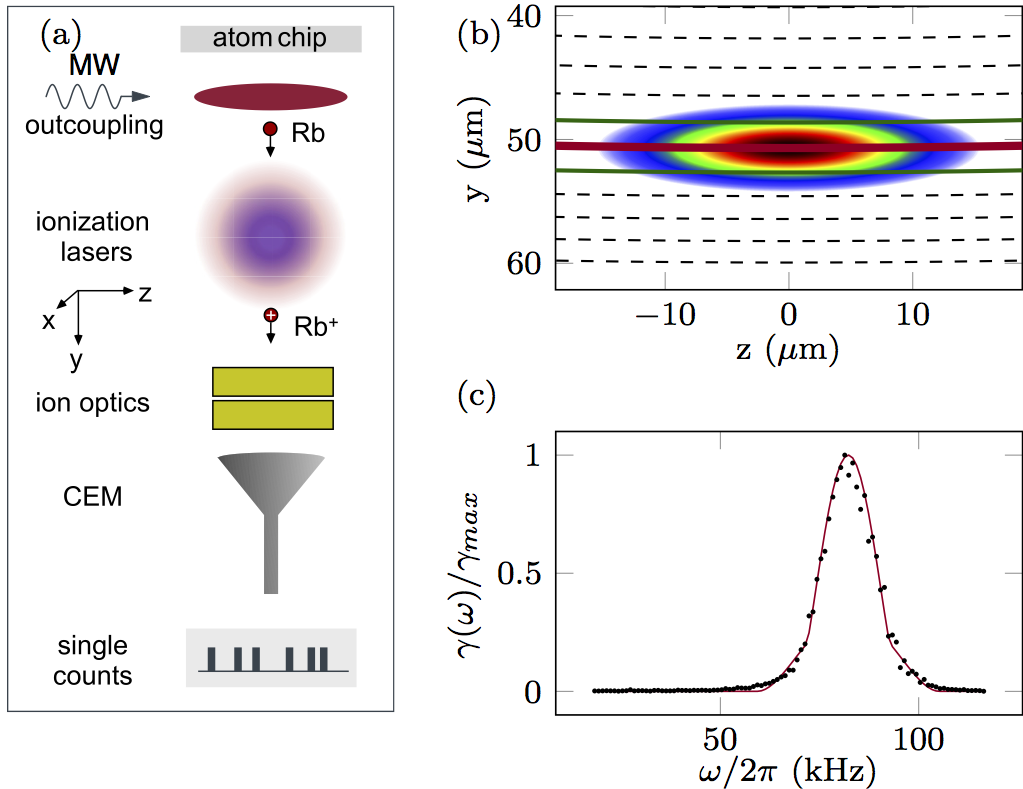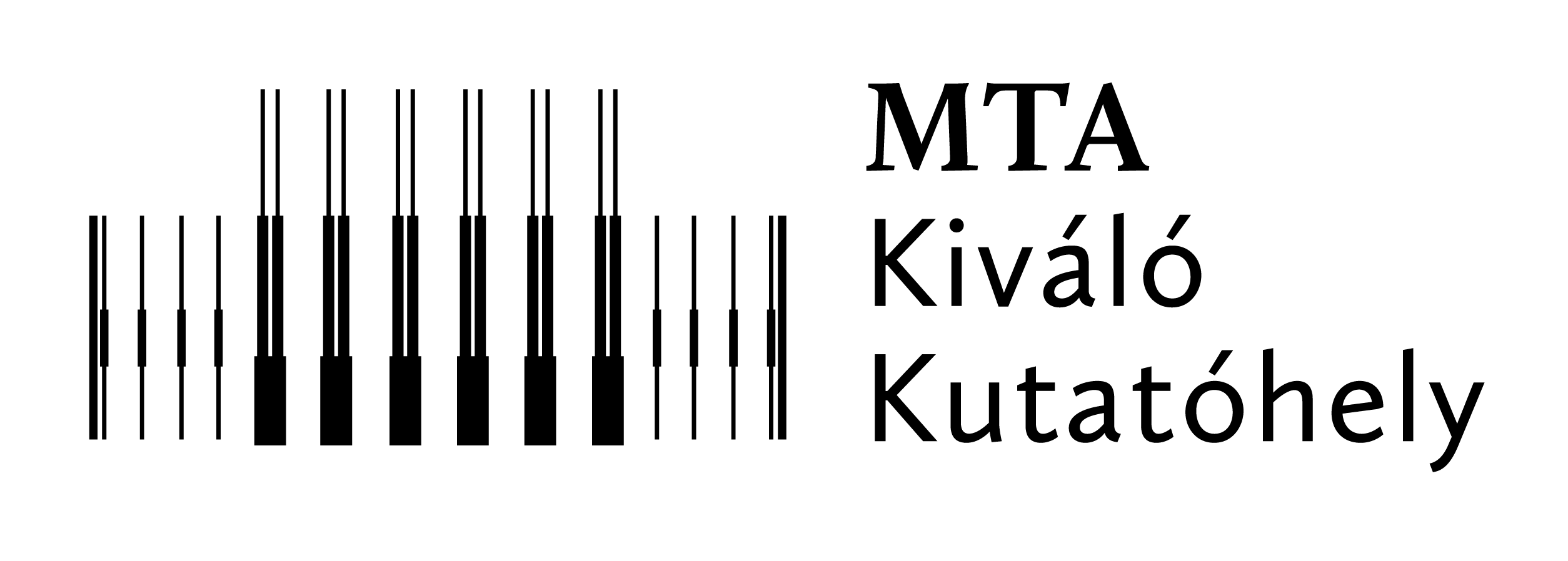2017
Cavity Quantum Electrodynamics, quantum critical phenomena. ― Non-equilibrium phase transitions exist in damped-driven open quantum systems, when the continuous tuning of an external parameter leads to a transition between two robust steady states.
In second-order transitions, this change is abrupt at a critical point, whereas in first-order transitions, the two phases can co-exist in a critical hysteresis domain. In collaboration with the experimental group of the ETH Zürich, we found a first-order dissipative quantum phase transition in a driven-circuit quantum electrodynamics (QED) system. It takes place when the photon blockade of the driven cavity-atom system is broken by increasing the drive power. The observed experimental signature is a bimodal phase space distribution with varying weights controlled by the drive strength. The measurements showed an improved stabilization of the classical attractors up to the millisecond range when the size of the quantum system is increased from one to three artificial atoms. The theoretical work included the fitting of the experimental data as well as it contributed to prove the phase-transition character of the effect. Furthermore it was possible to prove theoretically that the photon-blockade-breakdown effect relies on a given range of the parameters of a three-level atomic system. We showed that the parameters of the actual experimental setup happen to correspond to this range.
Ultracold gases, Bose-Einstein condensates. ― Modeling the coupling between a trapped Bose-Einstein condensate and a current carrying nanowire, we studied, in collaboration with an experimental group at Tübingen, the magneto-mechanical interaction by means of classical radio-frequency sources. We performed the spectral analysis and the local measurement of intensity correlations of microwave fields using ultracold quantum gases. The fluctuations of the electromagnetic field induce spin flips in a magnetically trapped quantum gas and generate a multimode atom laser. The output of the atom laser was measured with high temporal resolution on the single-atom level, from which the spectrum and intensity correlations of the generating microwave field have been reconstructed in accordance with our recently proposed scheme. We gave the theoretical description of the atom-laser output and its correlations in response to resonant microwave fields and verified the model with measurements on an atom chip. The measurement technique is applicable for the local analysis of classical and quantum noise of electromagnetic fields, for example, on chips, in the vicinity of quantum electronic circuits.

Figure 1. (a) Simulated histogram of the output intensity as a function of the coupling constant g2 between the two excited atomic states |eñ and |fñ at a given driving amplitude h with red representing high probability and blue indicating zero probablility. This plot shows that only a certain range of the ratio g2/g1 gives rise to bistability.
(b) Measured vacuum Rabi spectra for various input powers with all three atoms in resonance with the cavity. For better visibility the shown spectra are offset by 1.6 nW from each other. The sharp transmission peak shown in the inset appears stochastically. In this particular measurement (orange line at 4.4 fW input power), we observe only two frequency points with small but finite switching probability and we sample over multiple switching events resulting in a certain mean detected power. At lower drive power, no transmission is observed (no switching). At higher drive powers, the transmission peak approaches the cavity linewidth and scales linearly with input power (no switching again).
(c) Measured histogram of the detected power as a function of the cavity input power for a single transmon (density plot). The most likely photon numbers (line plots) are extracted from this measurement (red) and two similar measurements taken with 2 (orange) and 3 qubits (green) in resonance with the cavity mode. Simulation results for the single qubit case are shown with connected black symbols for comparison. The dashed line is for reference and represents the response of the empty cavity.

Figure 2. (a) Cold-atom spectrometer (not to scale) consisting of a magnetically trapped Bose-Einstein condensate and an ionization-based single-atom detector. (b) The microwave couples atoms at resonance surfaces given by equipotential surfaces of the atomic Zeeman potential, i.e., magnetic isofield lines (dashed lines). Due to gravity, the BEC is displaced from the magnetic trap center and the resonance surfaces become nearly plane. Without amplitude modulation, the microwave carrier couples atoms from a single resonance surface (red solid thick line) with a position given via ωc. Amplitude modulation at a single frequency generates sidebands to the carrier and outcoupling from two resonance surfaces (green solid thin lines). (c) Normalized spectral response γ(ω)/γmax of a BEC to a single microwave frequency (black dots) and model function (red line).



